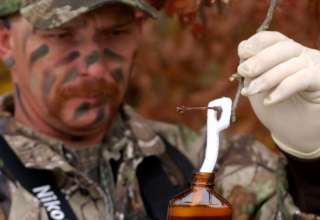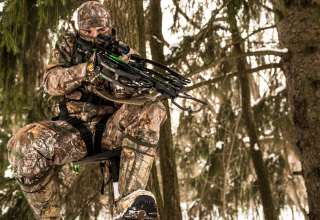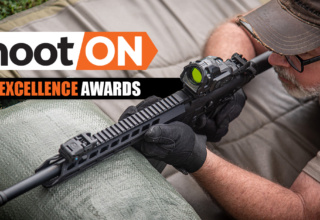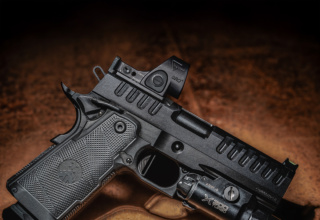Bowhunters have long assumed adopting wider broadheads results in more spilled blood and quicker kills. Take a look at early broadhead designs like the 1964 Ben Pearson Deadhead or 1970 Rothhaar Snuffer, both relinquishing 1 ¼-inch-plus cutting diameters, as prime examples. Today wider cutting diameters mean mechanical broadheads.

As an avid broadhead collector I find the most collectible, and valuable, broadheads usually include obvious design flaws, especially in relation to the equipment capabilities at the time of introduction. Today’s cutting-edge compounds deliver from 70 to 90 foot pounds of energy and shoot space-age carbon offering huge durability and penetration advantages—more than enough oomph to push the most aggressive broadheads, say New Archery Products’ 4-blade DoubleCross, through just about any big game animal. From the 1950s through ‘70s bowhunters were still shooting recurve bows shot at 45 to 65 pounds and launching relatively flimsy cedar arrows. They produced 40 to 55 foot pounds of energy—nearly half the average energy wielded today. Some of those vintage heads became so collectible because they were financial failures due to lack of performance on game.
Not so long ago this very argument erupted over mechanical broadheads. That’s been largely been put to rest, mechanical designs evolving through smarter engineering and superior materials. Yet let’s not forget two holes—entrance and exit—are preferable to one (especially when shooting from elevated stands where low exits are necessary to deposit tracking blood). Mechanical broadhead swinging blades, wider cutting diameters and blades that chop instead of slice can erode penetration potential to some degree, all other factors remaining equal, though this only presents a problem for those situated at the low end of the energy scale (youth, women or physically-limited shooters). If you aren’t seeing complete penetration, you might be better served by more efficient broadhead designs (like NAP’s cut-on-contact HellRazor).

Now that we got that out of the way, here’s a question: Do wider broadheads (1 7/8-inch-wide SlingBlade or 1 1/8-by-1 7/8-inch DoubleCross, just as examples) automatically spell quicker kills than narrower heads (Thunderhead 1 1/16-inch-wide Nitro or 1 1/8-inch HellRazor, as examples)? Intuition tells you yes—slashing 2-inch holes through vitals should cause nearly two times more hemorrhaging than a 1 1/16-inch-wide fixed-blade, resulting in death in half the time. Sounds reasonable enough, right? I’m here to say this isn’t necessarily true.
I’ve certainly witnessed big game, threaded with aggressive mechanicals, drop within 10-15 yards. But I’ve also witnessed myriad big-game animals (including mature bull elk), shot through with low-diameter fixed-blade designs drop inside 10-15 yards. Any breach of lungs, be it 2 inches or 1-inch wide, causes immediate and massive hemorrhaging, compounded by asphyxiation via eliminating negative pressure and making it impossible to draw another breath. This is a given.
What is more important to this discussion is how animals react immediately after being hit; breaking into a panicked death run, or not reacting at all. This generally hinges on imparted shock. Hit an animal with an aggressive mechanical and you’ll hear a loud and distinct watermelon thump. Blades slam open and that full cutting diameter must then be pushed through hide and perhaps ribs. A massive amount of energy is imparted. Animals become understandably alarmed after being punched so conspicuously. If your arrow is placed correctly, that animal’s dead on its feet obviously, but instinctual fight-or-flight responses coax that animal into panicked flight. A world-class athlete can cover 100 yards in 10 seconds. An adrenaline-filled deer is considerably faster…

This was clearly illustrated on an Oklahoma buck I shot through vitals with a 1 ¾-inch-wide Spitfire Maxx D6 with 1 ¾-inch cutting diameter. That buck greyhounded 200 yards in less than 10 seconds before I heard him crash into brush. Contrast that experience with an Idaho non-typical I shot last season. Let me first say northern Idaho whitetails are pursued by wolves and mountain lions year round, meaning they’re as wound up as possible. That buck arrived beneath an early-season apple tree at 19 yards. I put a 1 1/8-inch-wide Thunderhead Razor through his vitals, the arrow slicking through so lightening quick I thought I’d missed. The buck jumped, ran maybe 10 yards, stopped to look over his shoulder, suddenly growing unsteady and toppling on the spot. There’s no doubt that buck never knew what hit him. It was one of many such scenarios.
Don’t misconstrue my intensions here. I’m certainly not anti-mechanical—happily using them regularly, when traveling, as I live in a state where mechanicals aren’t legal. I’m just illustrating that if you must use a sleeker, low-profile fixed-blade head due to physical limitations and low energy delivery, or due to antiquated laws like those in Idaho, there’s no need to feel handicapped. Narrower fixed-blade heads kill just as fast as wider mechanicals.
To read part 1 of this article Click Here.
- Gaining an Edge With Sharp Broadheads - November 17, 2017
- Using Scents to Create Higher-Odds Bow Shots - November 7, 2017
- Fundamental Crossbow Maintenance - October 25, 2017















